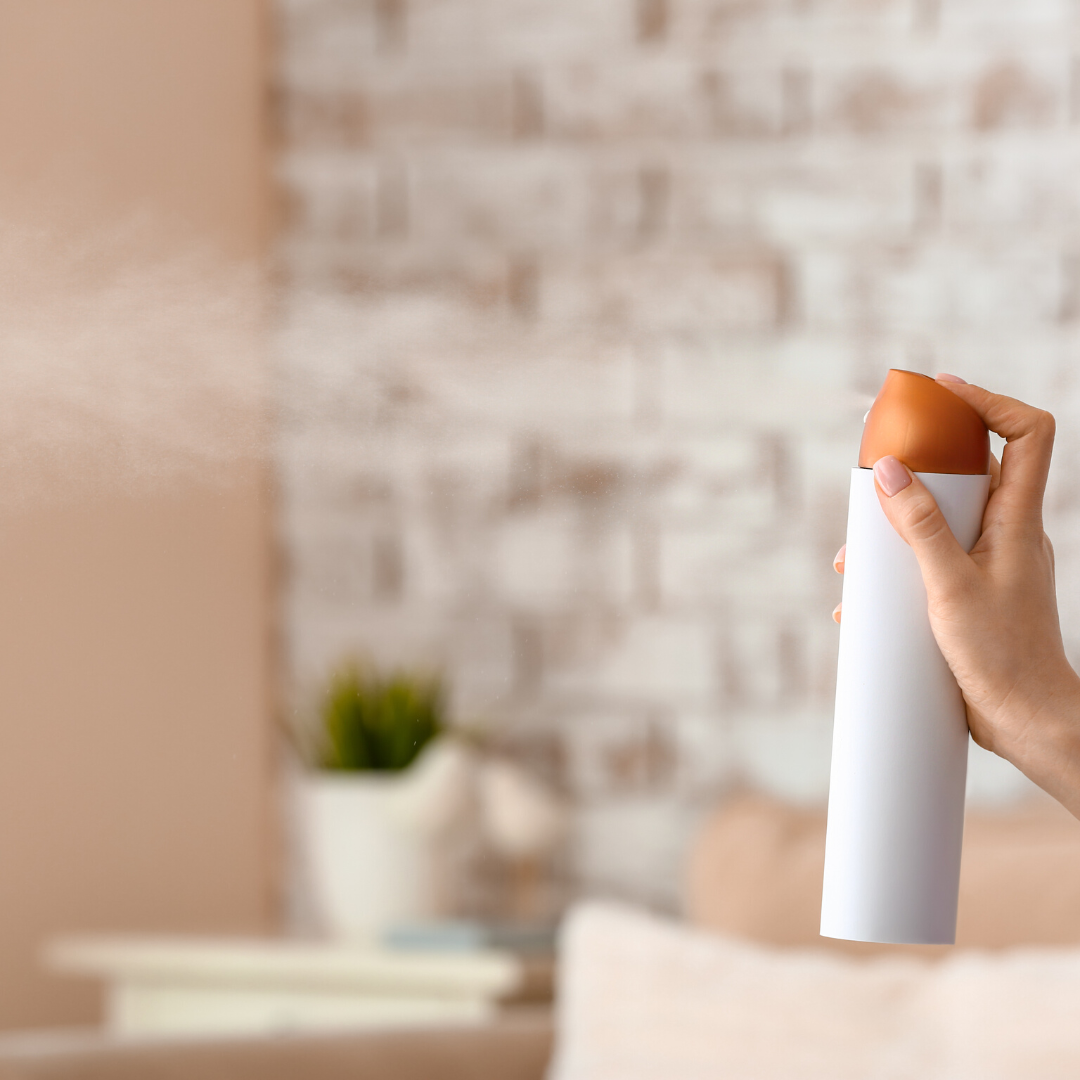With all the fall scents that are filling our homes and stores at this time of year, it’s important to talk about fragrances. What do you think of when you hear the word fragrance? Most people think of candles, perfume, scented bath products, etc. These are things we’ve been exposed to since birth, so we tend not to give them much thought, because they seem so normal. What if I told you that there’s evidence that fragrances are toxic, but stores and corporations are allowed to sell them to you anyway? You see the term “fragrance” is actually a blanket term for over 3,000 (or more) chemicals, and companies are not legally required by the FDA to list the ingredients that make up the word “fragrance”. The problem with these fragrances, is that we’re constantly exposed to them through every product we use, such as hand soap, shampoo, skin care, deodorant, lotion, cleaning products, car air fresheners, air fresheners in public places or bathrooms, laundry detergents, and so many more. So, not only do they have toxic ingredients that can harm our health, but we’re exposed to them non-stop. The ingredients in “fragrance” contain endocrine disruptors, carcinogens, allergens, neurotoxic chemicals, and environmental toxicants. Don’t believe me? Lets look at the facts:
- A study published in The National Library of Medicine explains that, “Fragranced products have been associated with a range of adverse health effects, such as migraine headaches, asthma attacks, respiratory difficulties, neurological problems, mucosal symptoms, and contact dermatitis”. Another study found that more than 156 VOCs were emitted from 37 fragranced consumer products, and 42 are classified as toxic or hazardous under US federal law. The most common VOCS were limonene, alpha-pinene, beta-pinene, and terpenes.
- The National Academy of Sciences points out that 95% of chemicals used in synthetic fragrances are derived from petroleum (crude oil). They include benzene derivatives (a known carcinogen), aldehydes, toluene, and many other known toxic chemicals linked to cancer, birth defects, central nervous system disorders and allergic reactions
- EWG found that 75% of products that list “fragrance” contain the hormone disrupting chemical, phthalates. Phthalates have been linked to many hazardous health conditions, such as reduced sperm count and testosterone, liver and breast cancers, reproductive malformations, and diabetes. Phthalates are also banned in Europe, Japan, South Korea, China, and Canada. The Consumer Product Safety Commission has even issued a warning about high phthalate levels in air fresheners.
- The National Academy of Sciences states that styrene, an ingredient in “fragrance”, is “reasonably anticipated to be a human carcinogen” based on “compelling evidence.” Styrene is found in other things like cigarette smoke and car exhaust, and is toxic to red blood cells.
- Most perfumes contain ethanol, which can be dangerous for children and pregnant women.
- Fragrances are in the top 5 known allergens and can trigger asthma attacks according to the EWG.
- Other common chemicals in “fragrance” include: Acetaldehyde (carcinogen and neuro toxin), BHA (endocrine disruptor and carcinogen), BHT (respiratory irritant), Butoxyethanol (reproductive toxicant and irritant),Dichloromethane (linked to mammary gland tumors, carcinogen), Formaldehyde (carcinogen, linked to throat and mouth cancers), Methanol (developmental toxicant), Oxybenzone (Endocrine disruptor, toxic to liver cells), parabens (endocrine disruptor), Ethylbenzene (is a VOC).
- Plug in air fresheners contain Naphthalene. This chemical has been proven to cause tissue damage and cancer in the lungs of rodents in laboratory studies.
- A study from International Journal of Public Health in 2013 of 2,000 pregnant women found that women who used plug-in air fresheners during gestation were statistically more likely to have babies suffering from serious lung infections.
Because of these alarming statistics, its best to avoid all candles, plug ins, air fresheners, perfumes, and switch your everyday products to natural, fragrances free options. By doing so, you can significantly decrease your cancer risk and the reduce your body’s toxic load.
To learn how you can easily avoid these fragrances, and other toxic ingredients schedule your health coaching session today, or subscribe to our Toxic Edition Guide that will be released in October.
References
Price, A. C. (2016, November 17). Dangers of Synthetic Scents Include Cancer, Asthma and Kidney Damage. Dr. Axe. Retrieved September 19, 2022, from https://draxe.com/health/dangers-synthetic-scents/
Steinemann. (2016, October 20). Fragranced consumer products: exposures and effects from emissions. NCBI. https://www.ncbi.nlm.nih.gov/pmc/articles/PMC5093181/#CR22
Children’s Environmental Health Network. (2022). FAQs: Fragrances. cehn.org. https://cehn.org/our-work/eco-healthy-child-care/ehcc-faqs/fragrances/
Schrock, M. (2019, May 24). WTF Is In Fragrance And Is It harmful!? Non Toxic Revolution. Retrieved September 19, 2022, from https://www.nontoxicrevolution.org/blog/wtf-fragrance
Ask EWG: What is “fragrance”? (2007, December 6). Environmental Working Group. Retrieved September 19, 2022, from https://www.ewg.org/news-insights/news/ask-ewg-what-fragrance
Safe Cosmetics. (2022, July 15). Fragrance. Retrieved September 19, 2022, from https://www.safecosmetics.org/chemicals/fragrance/
Watson, K. (2019, June 24). How to Know If Your Perfume Is Poisoning You. Healthline. Retrieved September 19, 2022, from https://www.healthline.com/health/perfume-poisoning#takeaway
Web, N. L. (2022, July 18). The Hidden Health Hazards Of Plug-In Air Fresheners. Indoor Doctor. Retrieved September 19, 2022, from https://www.indoordoctor.com/blog/health-hazards-plug-air-fresheners/

